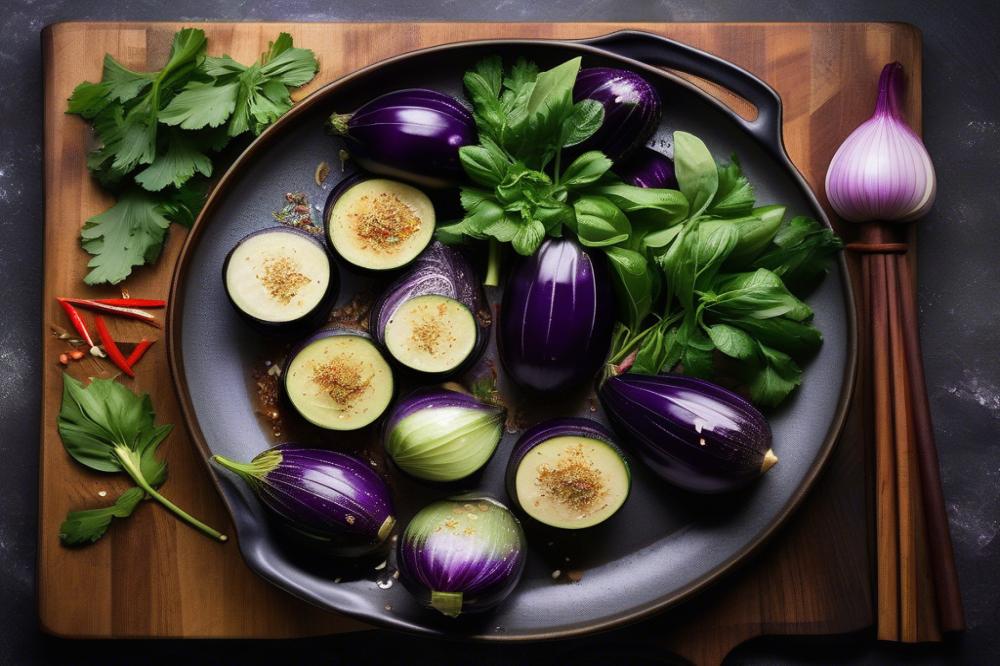Introduction
Vietnamese cuisine is known for its vibrant and diverse flavors. It combines fresh ingredients with fragrant herbs and spices to create delicious dishes. Many people enjoy the balance of sweet, sour, salty, and spicy elements in various recipes. Traditional dishes play a vital role in this culinary landscape, helping to preserve culture and family recipes passed down through generations. Local favorites often reflect the region’s unique ingredients and methods.
Cà Pháo is one such traditional dish, showcasing the delightful characteristics of Vietnamese cooking. This preparation offers not just a satisfying meal, but also a glimpse into the country’s rich history. A key recipe within this category is the Vietnamese salted eggplant. This dish features eggplant, a popular vegetable in many Asian cuisines, and transforms it into a flavorful offering. Preparing salted eggplant may seem daunting at first. However, with the right steps, anyone can master this dish.
Vegetarian dishes are an essential part of this cuisine, presenting options for those seeking lighter fare. With eggplant recipes, cooks can explore various techniques and taste combinations. Whether you are a novice or an experienced chef, understanding how to cook this unique dish can enhance your culinary repertoire. Join us as we delve into the delightful world of Cà Pháo Recipe and discover the basics of eggplant preparation.
Understanding Vietnamese Salted Eggplant
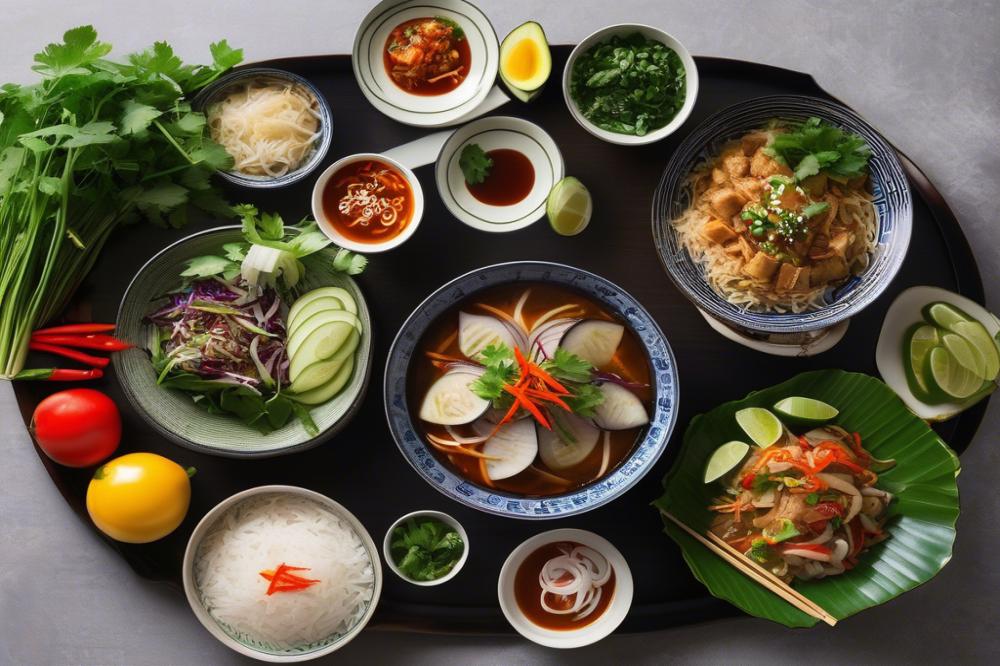
Salted eggplant, known in Vietnamese as cà pháo muối, is a popular pickled dish. This preparation involves soaking eggplant in brine, which helps to preserve its flavor and texture. As a side dish, it complements many traditional foods and adds a rich layer of taste to meals. This method of cooking keeps the vegetable crisp and offers a burst of flavor with every bite.
In Vietnamese cuisine, salted eggplant holds significant cultural value. People enjoy it for its tangy and salty taste, which balances well with rice and other savory dishes. Many families serve this dish during gatherings and special occasions. It fosters a sense of community and shared tradition among diners.
Eggplant itself is quite nutritious. It is low in calories and provides fiber, which promotes good digestion. A variety of vitamins and minerals, such as potassium and vitamins C and K, make this vegetable an essential part of healthy eating. When exploring eggplant recipes, one can appreciate its versatility, especially in vegetarian dishes. Many Asian recipes utilize this wonderful vegetable in soups, stir-fries, and salads, showcasing its adaptability.
Understanding how to cook salted eggplant can lead to delightful meals. This dish not only enriches your dining experience but also contributes to a balanced diet. Learning eggplant preparation methods expands your culinary skills and knowledge about Vietnamese flavors. Try incorporating it into your next meal, and enjoy the traditional tastes it brings to the table.
Ingredients List and Cooking Instructions
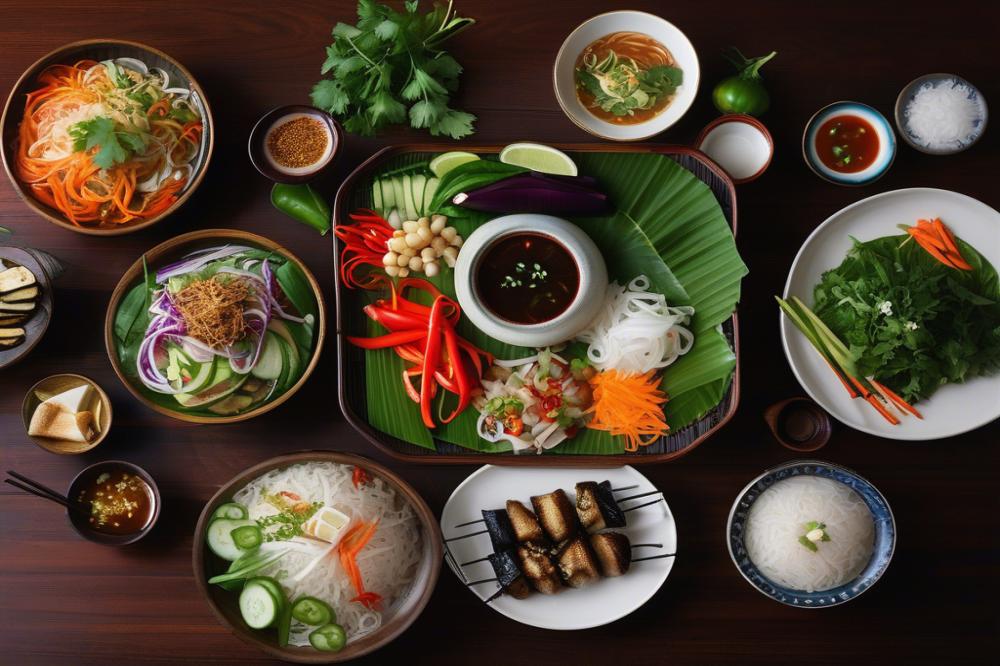
Ingredients List
To create a delicious plate of Vietnamese salted eggplant, gather the following ingredients:
- 4 medium-sized eggplants
- 2 tablespoons salt
- 3 cloves garlic, minced
- 1 red chili, sliced
- 1 tablespoon sugar
- 2 tablespoons vegetable oil
- Optional: scallions for garnish
Cooking Instructions
Begin with the eggplant preparation. Start by washing the eggplants thoroughly under cold water. After drying, slice them into rounds around half an inch thick. Place the sliced eggplants in a bowl, and sprinkle them well with salt. Let them sit for about 30 minutes. This process helps draw out the bitterness and excess moisture from the eggplant.
Next, rinse the salted eggplant slices under cold water. Drain them well, squeezing gently to expel any remaining water. Now heat the vegetable oil in a large pan over medium heat. Once the oil is hot, add the minced garlic and sliced chili. Sauté them for about a minute until fragrant, but watch carefully not to burn the garlic.
It’s time to combine the eggplant with your sizzling garlic and chili. Toss in the salted eggplant slices and stir-fry them for about 5-7 minutes. The goal here is to achieve a tender texture without losing the essence of the vegetable. As the eggplant cooks, sprinkle in the sugar to balance the flavors. Continue stirring until evenly coated.
When the eggplant becomes soft and slightly caramelized, remove the pan from heat. To serve, transfer the eggplant to a plate and garnish with finely chopped scallions, if desired. This dish can be enjoyed warm or at room temperature. Cà Pháo makes a fantastic side for other vegetarian dishes or Asian recipes, offering a delightful experience for your taste buds.
Nutritional Information of Ingredients
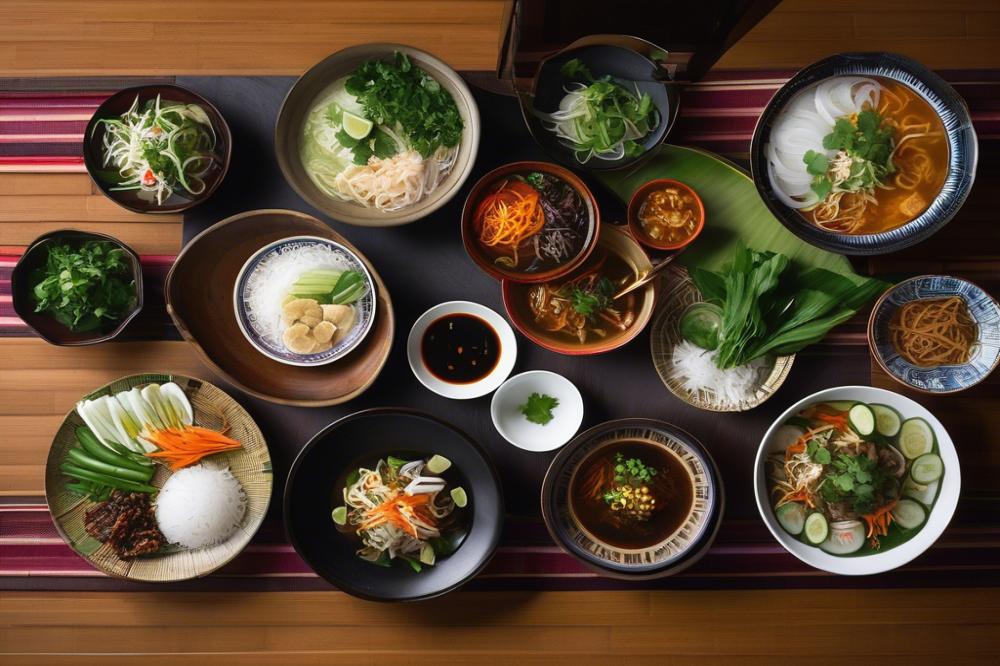
Understanding the nutritional value of each ingredient is important when trying to maintain a healthy lifestyle. Let’s break down the calories and nutrients found in the common components of this dish.
Calories and Nutrients Breakdown
Eggplant, the star of the show, is low in calories, with about 20 calories per 100 grams. This makes it an ideal choice for those looking to watch their weight. It provides fiber, which is good for digestion and helps you feel full.
Salted eggplant provides a distinct flavor but can be higher in sodium. This means moderation is key, especially if you are monitoring salt intake. The egg used in the recipe adds protein, essential fats, and several vitamins such as B12 and D.
Garlic and chili peppers not only enhance taste but also offer health benefits. Garlic has anti-inflammatory properties, and chili can boost metabolism. Furthermore, rice or grains served alongside can add carbohydrates, making the meal more filling.
Health Benefits of Eggplant and Other Components
The health benefits of eggplant go beyond its low calorie count. Packed with antioxidants, it can contribute to heart health and may lower the risk of certain diseases. Its skin is rich in phenolic compounds, which have beneficial effects.
Eggplant also contains vitamins such as K and C, which are important for bone health and immune function. Incorporating these purple vegetables into vegetarian dishes provides essential nutrients without the need for meat.
Chili peppers can even help with pain relief, while garlic helps lower cholesterol levels. Both ingredients complement each other and the main star of the dish well.
Tips for Making It a Balanced Dish
When cooking salted eggplant, consider how to make the entire meal balanced. Pairing this dish with whole grains like brown rice adds fiber and nutrients. This not only improves the dish’s overall nutrient profile but makes it more satisfying.
Adding a side salad can increase your vegetable intake, which is always a plus. Fresh veggies offer crunch and a different set of nutrients. They can enhance the dish visually and nutritionally.
Experimenting with cooking methods can also elevate the health factor. Try steaming or grilling your eggplant instead of frying. These techniques preserve nutrients and keep calorie counts low, aligning with the goals of many Asian recipes.
Finally, don’t shy away from herbs and spices. Fresh herbs bring vibrant flavors and additional nutrients to your plate. Making these small adjustments can make traditional dishes even healthier.
Serving Suggestions and Variations
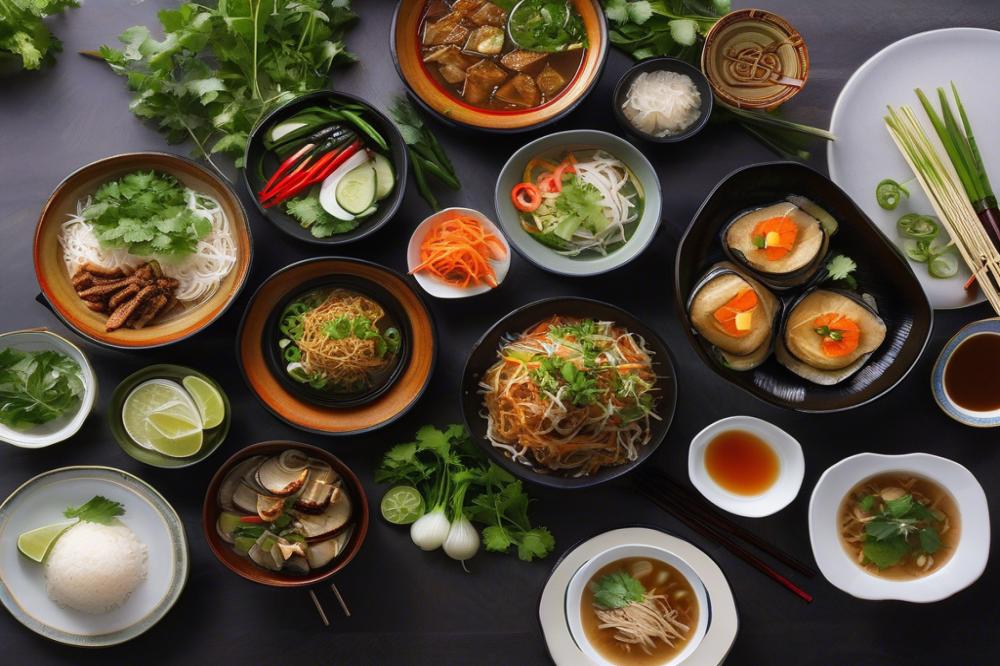
Traditional Ways to Serve Vietnamese Salted Eggplant
Vietnamese salted eggplant is a beloved dish. Traditionally, it is served as a part of a larger meal. This means it often appears alongside rice and other dishes. Fresh herbs or a side of dipping sauce enhance its flavors. Many enjoy it cold, straight from the refrigerator. This chilled version creates a refreshing bite, especially in hot weather. The tangy and salty notes pair beautifully with simpler flavors.
Pairing with Rice or as a Side Dish
When preparing a meal, think about including this eggplant as a side. It complements steamed or fried rice extremely well. Adding a protein, like grilled fish or chicken, can create a satisfying dinner. Combining different textures makes every bite enjoyable. Vegetarians might find it equally delicious served next to bean dishes. Consider the balance of flavors—this helps bring the meal together.
Suggested Variations for Added Flavor and Nutrition
To elevate the dish, try incorporating garlic or chili during cooking. Garlic adds richness, while chili brings a bit of heat. Some people even toss in chopped tomatoes or onions for sweetness. These additions not only enhance flavor but also boost nutrition. Using different seasonings like lemongrass or turmeric could transform the dish entirely. These variations reflect the creativity found in many Asian recipes.
Other Eggplant Recipes in Vietnamese Cuisine
Beyond salted eggplant, Vietnamese cuisine offers a variety of eggplant recipes. For instance, stir-fried eggplant with pork is a classic dish. It showcases the vegetable’s versatility. Another popular option is grilled eggplant topped with a savory sauce. This method highlights its smoky flavor. Some might enjoy a simple sautéed version with soy sauce and herbs. Each recipe brings different ingredients and methods to the forefront. There is always something new to discover in the world of cooking eggplant.
Wrapping It Up
The recipe for cooking salted eggplant offers a glimpse into the heart of Vietnamese cuisine. This dish represents a harmony of flavors and textures that are cherished in many Asian culinary traditions. It is a delightful way to enjoy eggplant and highlights the creativity involved in simple vegetarian cooking.
Trying out this recipe can be a rewarding experience. Fresh ingredients bring vibrant life to your table, and the preparation is straightforward enough for anyone to follow. It invites you into the rich world of Vietnamese flavors, encouraging exploration in your own kitchen.
Embracing traditional dishes nurtures family connections. Meals like this are often made to share, bringing loved ones together. The act of cooking becomes a celebration, much like how family meals have been enjoyed for generations. So why not give this dish a chance? You might just find a new family favorite.

